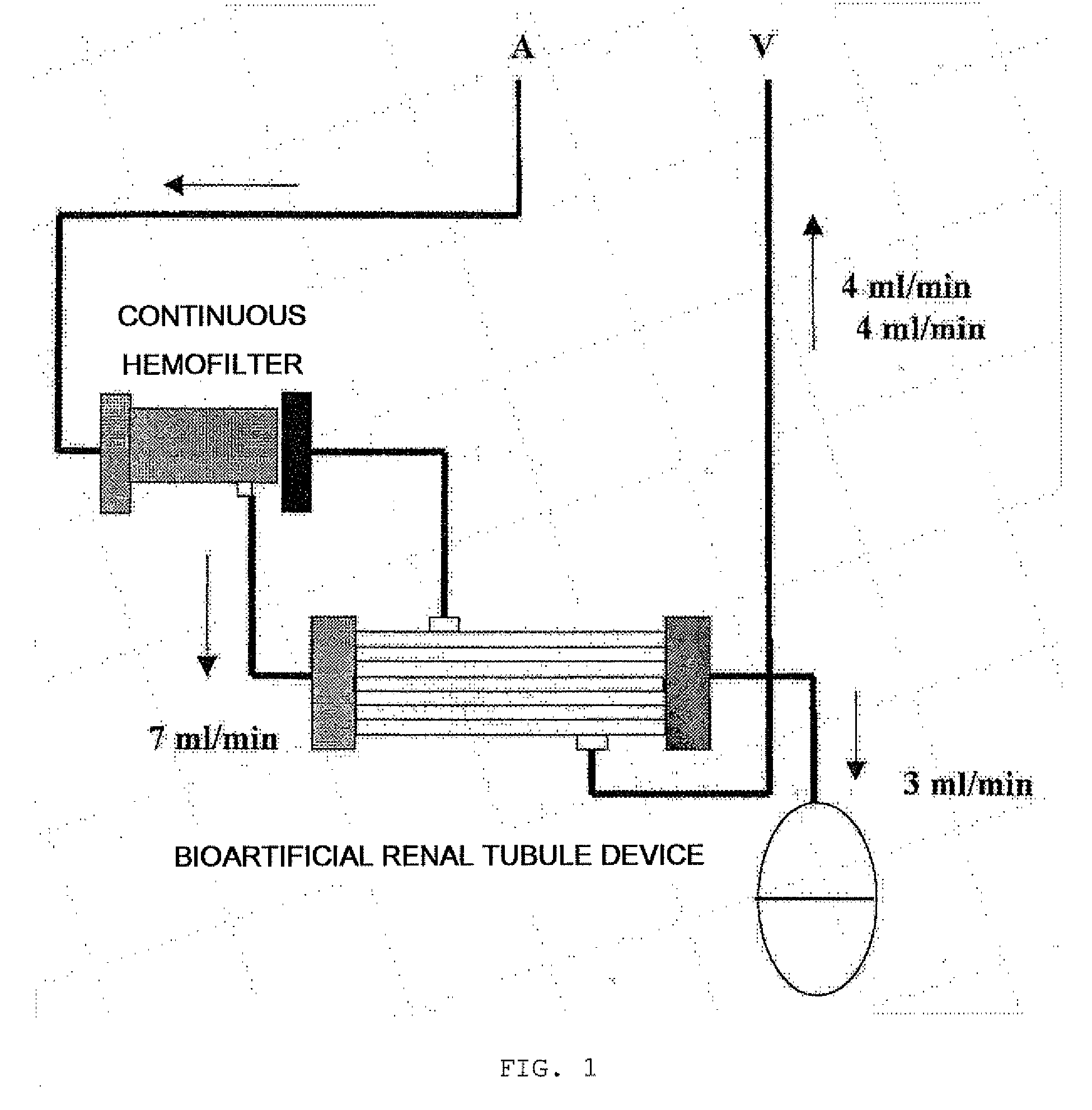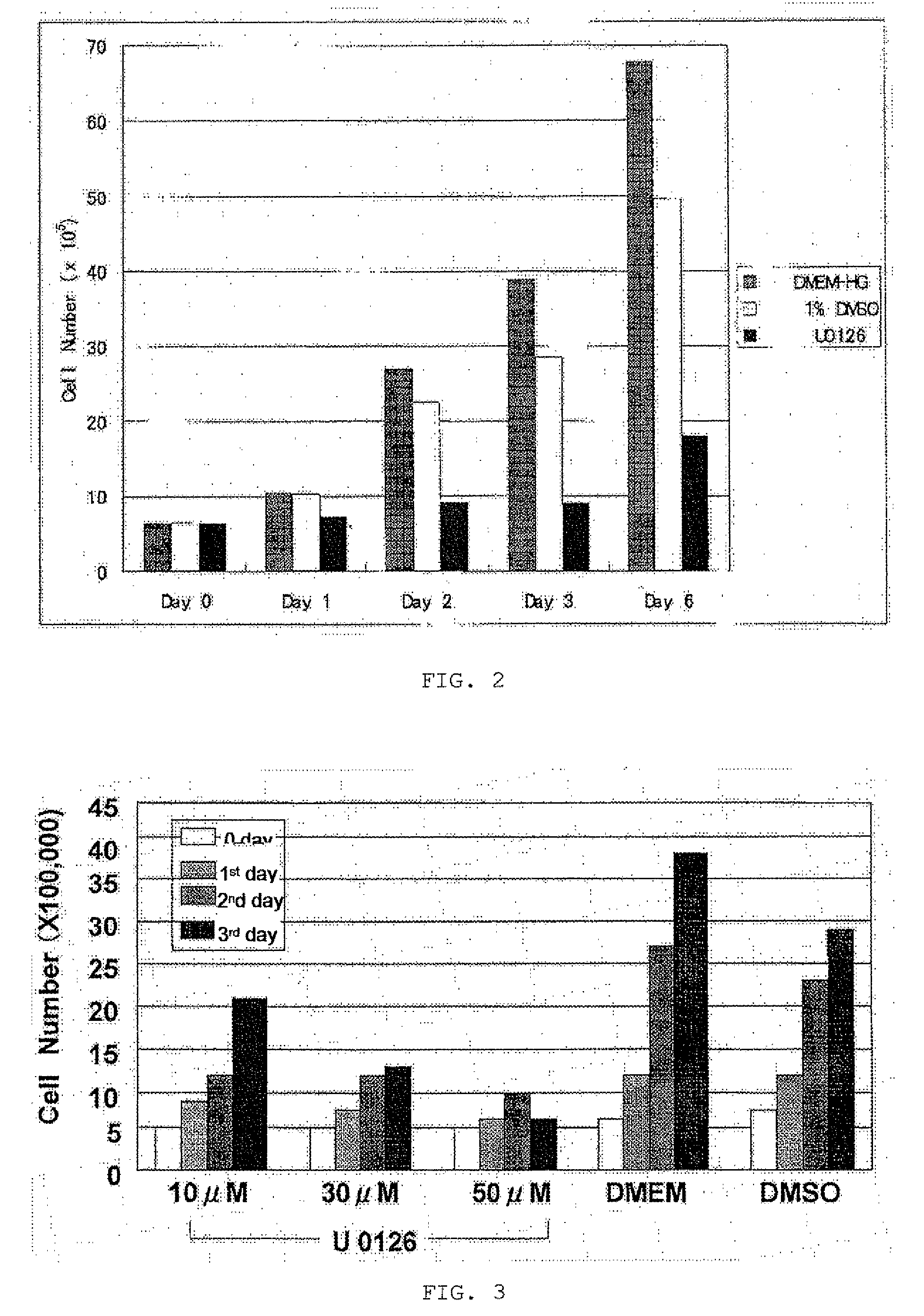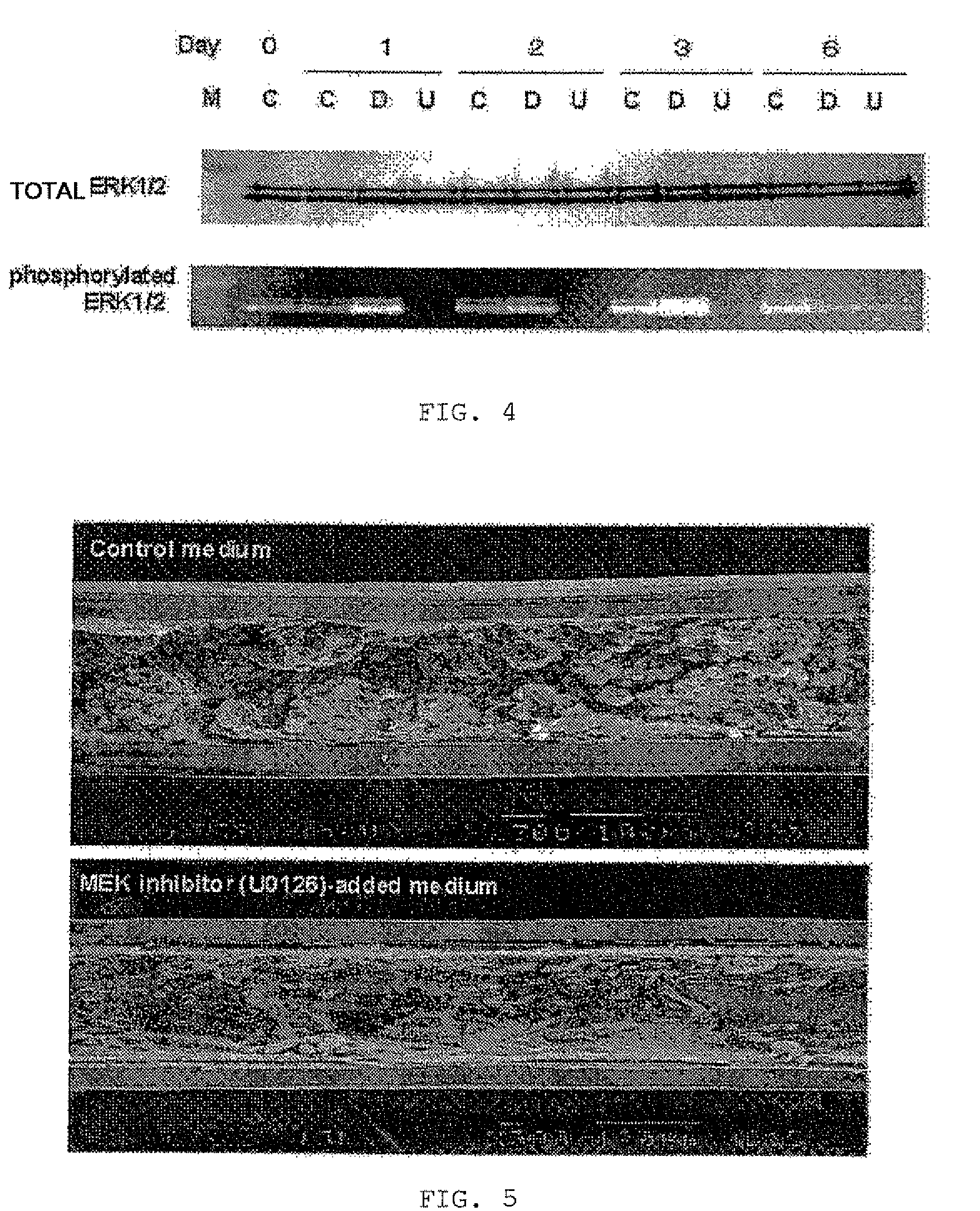Bioartificial Renal Tubule
a technology of artificial kidney and kidney, which is applied in the field of bioartificial kidney, can solve the problems of deterioration of artificial kidney tubule device, renal tubule device serious deterioration, study suspension, etc., and achieves simple and sustainable treatment, improved symptoms, and efficient and selective reabsorption.
- Summary
- Abstract
- Description
- Claims
- Application Information
AI Technical Summary
Benefits of technology
Problems solved by technology
Method used
Image
Examples
example 1
Method
[0076]On each transwell filter unit, 2×106 Lewis-lung cancer porcine kidney (LLC-PK1) cells, which were cryopreserved porcine proximal renal tubular epithelial cell lines, were seeded. The LLC-PK1 cells were cultured in (1) a high-glucose-DMEM (DMEM-HG) medium, (2) a DMEM-HG medium containing 1% dimethyl sulfoxide (DMSO), or (3) a DMEM-HG medium, containing 50 μM U0126 and 1% DMSO, placed in outside of inserts (lumens were filled with the DMEM-HG medium). The LLC-PK1 cells on 0 day, the first day, the second day, the third day, and the sixth day after seeding were colored with trypan blue and then measured for number for each group. The LLC-PK1 cells were gently washed with a sterilized PBS solution containing no magnesium or calcium and were then trypsin-treated with 1 ml of a trypsin-EDTA solution at 37° C. for 15 minutes. The treated cells (1 ml) were added to 4 ml of DMEM, were colored with trypan blue, and were then measured for number with a hemocytometer. Measurement wa...
example 2
Method
[0079]On each 6-well plate, 5×105 LLC-PK1 cells were seeded. Broths used to culture the cells were replaced with the following three media 24 hours later after seeding: (1) a high-glucose DMEM (DMEM-HG) medium containing 10 μM U0126, which is a MEK inhibitor, and 1% DMSO; (2) a DMEM-HG medium containing 30 μM U0126 and 1% DMSO 1%; and (3) a DMEM-HG medium containing 50 μM U0126 and 1% DMSO. Furthermore, two groups of the cells cultured in (4) a DMEM-HG medium and (5) a DMEM-HG medium containing 1% DMSO were checked. The cells on 0 day, the first day, the second day, and the third day after seeding were colored with trypan blue and then measured for number.
[0080]Results
[0081]FIG. 3 shows the change in number of the LLC-PK1 cells grown in the media (1) to (5) from 0 day to the third day. In the 1% DMSO-containing medium group, the increase of the cells is suppressed to some extent as compared to in the DMEM-HG medium group, but the cells clearly increase in number with day. The ...
example 3
Method
[0082]In each of 6-well plates, 5×105 LLC-PK1 cells were seeded. The cells were divided into three groups on the following day (0 day). That is, the cells of each group were cultured in a corresponding one of the following three media for three days: (1) a DMEM-HG medium (C) used as a control, (2) a DMEM-HG medium containing 1% DMSO (D), and (3) a DMEM-HG medium containing 50 μM U0126 and 1% DMSO (U). Then the media (D) and (U) were replaced with a DMEM-HG medium. The cells of each group were further cultured for three days. The cells were subjected to Western blot analysis for ERK1 / 2 on 0 day, the first day, the second day, the third day, and the sixth day.
[0083]The cultured LLC-PK1 cells were used in the form of a cytolytic solution for Western blot analysis. The sampled cells of each group were rinsed with ice-chilled PBS and were then centrifuged at 4° C. for five minutes at 1500 rpm. The centrifugate was collected and then maintained at −80° C.
[0084]Proteins were taken fr...
PUM
| Property | Measurement | Unit |
|---|---|---|
| size | aaaaa | aaaaa |
| area | aaaaa | aaaaa |
| inner diameter | aaaaa | aaaaa |
Abstract
Description
Claims
Application Information
 Login to View More
Login to View More - R&D
- Intellectual Property
- Life Sciences
- Materials
- Tech Scout
- Unparalleled Data Quality
- Higher Quality Content
- 60% Fewer Hallucinations
Browse by: Latest US Patents, China's latest patents, Technical Efficacy Thesaurus, Application Domain, Technology Topic, Popular Technical Reports.
© 2025 PatSnap. All rights reserved.Legal|Privacy policy|Modern Slavery Act Transparency Statement|Sitemap|About US| Contact US: help@patsnap.com



